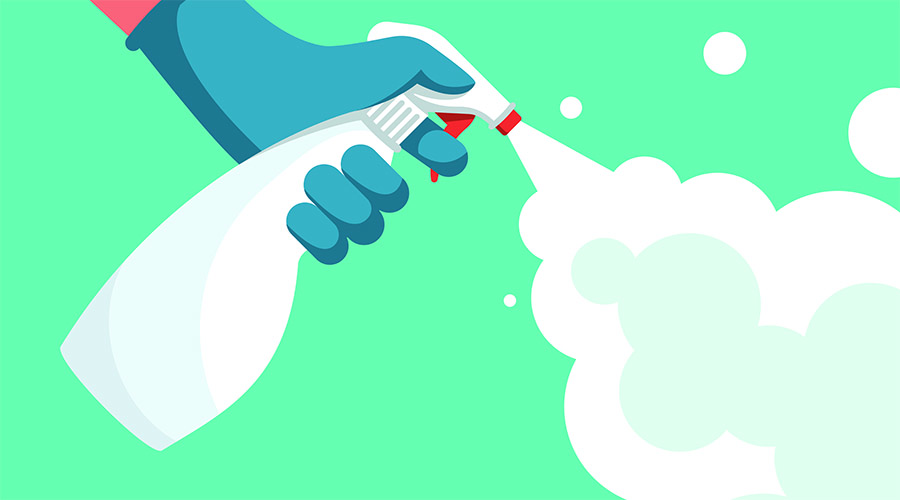
Hypochlorous acid (HOCl or hypo) is not a new substance or chemistry. In fact, it has been around for decades — often used to clean wounds on the battlefield, to disinfect drinking water and as a surface disinfectant.
Historically, HOCl has also been commonly used in agriculture and dairy farming. For example, dairy farmers often use it as a teat dip, a post-milking technique that helps control the spread of mastitis organisms during the milking process. In agriculture, it’s common to use HOCl in irrigation systems for microbial control on plant and fruit crops.
Hypochlorous acid can also be found inside the human body. It naturally resides in white blood cells, helping the immune system keep people healthy.
In recent years, HOCl has gained traction in the cleaning industry, too. Although it needs to be used differently than concentrated chemical sanitizers and disinfectants, it can be used in a way that promotes worker health and safety, environmental safety and sustainability, and it protects facility materials and the quality of indoor air.
This is neutral pH chemistry that has no added synthetic chemicals, fragrances or dyes. That’s important because it means hypochlorous acid leaves no residue and causes less irritation and fewer allergic reactions. It’s also not on the AOEC (Association for Occupational and Environmental Clinics) Asthmagen list or known to cause or exacerbate asthma.
Finally, the way it kills pathogens does not support the formation of superbugs. For example, chlorine bleach (a water solution of sodium hypochlorite) and quaternary ammonium compounds (quats) both bang on the cell wall of pathogens, forcing those cells to protect themselves by putting out a lipid layer and adapting (forming superbugs). With HOCl, this doesn’t happen. It is a neutral solution, so the pathogen invites it in like it’s water. Once inside, HOCl oxidizes the pathogen from the inside, destroying it.
This is important because there has been a recent increase in superbug formation, as well as industry accidents and deaths from improper mixing or ingestion of harsh chemicals. The global pandemic and supply chain issues impacting product availability have not helped matters either. Through all of that, though, HOCl has proven to be a promising and safe option for those responsible for cleaning and maintaining facilities.
Two-Step Cleaning Then Disinfecting

 Celebrating BSCAI's 60th Anniversary eBook
Celebrating BSCAI's 60th Anniversary eBook The Down and Dirty on Cleaning in Virus Season
The Down and Dirty on Cleaning in Virus Season How Surfactant Use is Expanding in Commercial Cleaning
How Surfactant Use is Expanding in Commercial Cleaning